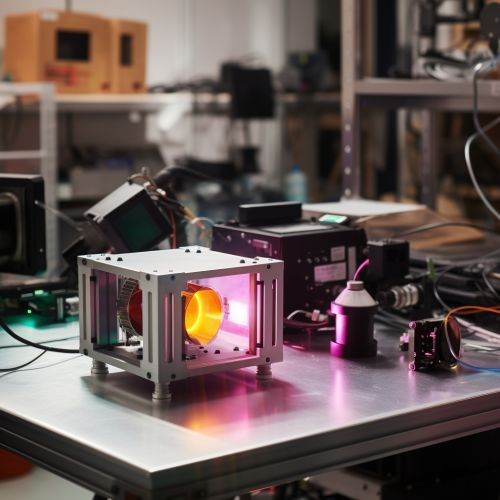Spectral Imaging
Introduction
Spectral imaging is a branch of spectroscopy and photonics, in which an object is illuminated and the reflected or transmitted light is captured and analyzed for spectral content. This process involves the use of a spectrometer, a device that measures properties of light over a specific portion of the electromagnetic spectrum. Spectral imaging can reveal information about an object that is not visible to the naked eye, such as its chemical composition, thermal properties, and more.


Principles of Spectral Imaging
Spectral imaging combines two fundamental principles of light: its spectral content and its spatial distribution. The spectral content of light refers to the range of wavelengths present in the light, while the spatial distribution refers to how the light is arranged in space. By combining these two principles, spectral imaging can provide detailed information about the physical and chemical properties of an object.
Spectral Content
The spectral content of light is determined by its wavelength. Different wavelengths of light correspond to different colors, with shorter wavelengths appearing as blue and longer wavelengths appearing as red. In spectral imaging, the spectral content of light is analyzed to determine the chemical composition of an object. This is because different chemicals absorb and reflect light at different wavelengths, creating a unique spectral signature.
Spatial Distribution
The spatial distribution of light refers to how light is arranged in space. In spectral imaging, the spatial distribution of light is analyzed to determine the physical properties of an object. This can include its shape, size, and texture. By analyzing the spatial distribution of light, spectral imaging can provide detailed images of an object's surface and interior.
Applications of Spectral Imaging
Spectral imaging has a wide range of applications across various fields, including biology, astronomy, geology, and medicine.
Biology
In biology, spectral imaging is used to study the chemical composition of biological samples. For example, it can be used to identify the presence of specific proteins or other biomolecules in a sample. This can be useful in diagnosing diseases or studying biological processes.
Astronomy
In astronomy, spectral imaging is used to study the composition of celestial bodies. By analyzing the light emitted or reflected by a star or planet, astronomers can determine its chemical composition, temperature, and other properties. This information can provide valuable insights into the formation and evolution of the universe.
Geology
In geology, spectral imaging is used to study the composition of rocks and minerals. By analyzing the light reflected by a rock or mineral sample, geologists can determine its chemical composition and physical properties. This can be useful in identifying mineral deposits or studying geological processes.
Medicine
In medicine, spectral imaging is used to diagnose and monitor diseases. For example, it can be used to identify the presence of certain chemicals in the body, such as glucose or cholesterol. This can be useful in diagnosing conditions like diabetes or heart disease.
Future of Spectral Imaging
The future of spectral imaging is promising, with ongoing research and development aimed at improving the technology and expanding its applications. This includes the development of more advanced spectrometers, as well as new techniques for analyzing spectral data. As the technology continues to evolve, it is expected that spectral imaging will play an increasingly important role in various fields, from scientific research to industrial applications and beyond.
